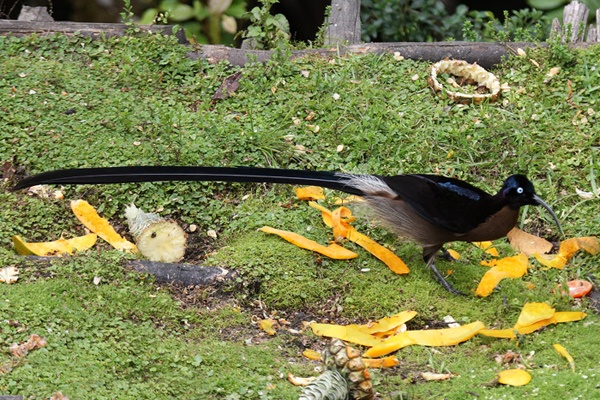Brown Sicklebill(Epimachus Meyeri)
The Brown Sicklebill is distributed to mountain forests of New Guinea, Its appearance resembles the closely related and larger Black Sicklebill.This bird was discovered by Carl Hunstein in 1884. Its diet consists mainly of fruits, arthropods and small animals.
The Brown Sickbill, Epimachus meyeri is a large, up to 96 cm long, dark blue and green bird-of-paradise with highly iridescent plumages, a sickle-shaped bill, pale blue iris and brown underparts. The male is adorned with ornamental plumes on the sides of its rear and a huge sabre-shaped central tail feathers that are highly prized by natives. The female is a reddish brown bird with buff barred black below.
Polygynous
Solitary males display and sing at one or more traditional perches. Displays recorded February, May-August and September-December. Males incorporate static posture, pumping, leaning, upright postures where body is erect, tail slightly opened and flank plumes encircle body. Male also rotates body with a series of short jerks.
Breeding
Breeding at least April-January. Females build and attend to nests alone. Incubation, nestling and development unknown. Known to hybridise with Ribbon-tailed Astrapia in captivity.
For more information please visit- wikipediaCategory: Bird-Of-Paradise











0 comments